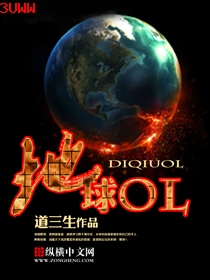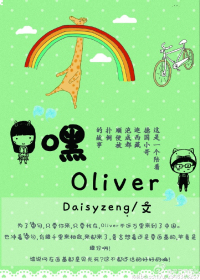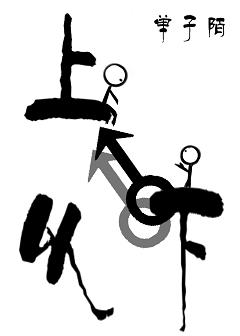wgolding.lordoftheflies-第42部分
按键盘上方向键 ← 或 → 可快速上下翻页,按键盘上的 Enter 键可回到本书目录页,按键盘上方向键 ↑ 可回到本页顶部!
————未阅读完?加入书签已便下次继续阅读!
In this passage and elsewhere Simon's abstinence from eating meat contributes to the impression of his saintliness; particularly since the novel implies that the hunt for meat as food disguises the blood…lust to kill for killing's sake; and further; that carnivorousness is linked with carnality (by the symbolic coitus of the sow killing) ;4
As a repeated object of ridicule; snickered over and laughed at; Simon's predicament recalls the New Testament details of the centurions' mocking of Jesus。 And as Golding has pointed out; the Biblical temptation of Christ has its parallel in Lord of the Flies; in the confrontation between the boy and the 〃beast;〃 between Simon and the sow's head; which tries to while him into placency。
To Ralph; Simon prophesies that; 〃 'You'll get back where you came from;' 〃 and by excluding himself from the predicted rescue; prophesies in that same breath his own fate; not to be rescued。 Not to be rescued is not necessarily to die; but the attendant analogues being what they are; there seems to be a clear correspondence between Simon's foresight and that of Christ; as accounts hold Christ to have anticipated the imminence of his 〃hour。〃
Images of Gethsemane and Golgotha amass in the description of Simon's agony in his thicket sanctum; transfixed by the impaled head…the apparition of the beast in the
4pare E。 L。 Epstein; 〃Notes on Lord of the Flies〃 p。 280 in this volume and; further; Golding's own remarks in the interview with James Keating; p。 195 in this volume。…Eds。
forest that induces in Simon his apprehension of the beast in man's heart; the boy…mystic's vision; to paraphrase Richard Wilbur; of how much we are the beast that prowls our woods。 The incidents of Simon's kneeling and sweating accord directly with the story of Gethsemane; moreover; Gold…ing's description reinforces those associations by half raising popular pictorial renderings of the person of Jesus and of the Agony in the Garden: Simon kneeling in an 〃arrow of sun;〃 with 〃head tilted slightly up;〃 sweat running from his 〃long; coarse hair。〃 (The deft advantage to which Golding here puts calendar…art graphics is noteworthy。)
As the thicket is the setting for incidents that recall Gethsemane; it is the setting also for events that evoke images of Golgotha。 Simon falls; in accord with gospel accounts of Jesus' ascent to the cross; and losing consciousness; regains it only after shedding blood; the nosebleed of the boy analogous to the lance…wounding of Jesus in the details of the crucifixion。
It is as sacrificial victim; however; that Simon most clearly emerges as a Christ figure。 A lad whose feet 〃left prints in the soil〃 (the dirt…road treks of the teaching Master?); he is described as 〃burned by the sun;〃 not tanned to gold like the other boys; but burnt; offering…like。 When; after he has received the revelation that the 〃beast;〃 the 〃thing〃 really to fear; is man's nature; it is with Christ…like resignation to inevitability (〃What else is there to do?〃 /〃Let Thy will be done。〃) that Simon sets out to discover what the 〃beast on the mountain〃 really is; since it is not a thing to fear。 When he finds the body of the chutist and disentangles the lines; Simon is seen as ministering to the dead; mitting the body to the earth so that the processes of deposition can plete the return 〃to earth。〃 However; because the wind takes hold of the chute and carries off the corpse; Simon bees the exorcist from the island of the false menace; the mistakenly feared dead man。 (Golding recollects in the Keating interview…after explaining that his memory of the novel might be blurred…that Simon releases the body 〃so that the wind can 'italics mine' blow this dead thing away from the island;〃 implying intention on Simon's part。) In any event; Simon's Christ…role is confirmed when; following his discovery that the 〃beast on the mountain〃 is only the dead airman; Simon es down from the mountain…the 〃heights of truth〃…to save the boys from their false fears and to turn their sights inward upon their own behavior; sharing the knowledge that; while the dead are not to be feared; the live are。 (It might better be said that; while the dead are not to be feared; the killed are。)
The responsibility for the martyrdom of Simon; like the responsibility for that of Jesus; can be ascribed either to secular or sacred interests。 At first the tribe maintains that it was not Simon they had killed; but the terrorizing 〃beast〃 and Simon is made a scapegoat; the capital…punishment of whom satisfies the established state (the tribe) by eliminating a supposed enemy。 Later on the boys admit that it was not the 〃beast〃 that they had killed; but Simon; rationalizing that the human sacrifice will finally appease the 〃beast;〃 which they have been placating with pigs' heads; and Simon is made a human offering; the immolation of whom assuages the established god (the 〃beast〃); the priests of which the 〃celebrants〃 of the sacrificial feast bee。
However; the analogue between Golding's Simon and Christianity's Saviour stops short of soteriology。 Only Simon has hearkened。 From his life and death no help accrues to that microcosm of humanity; on its island Earth in a space of sea; lost; and in need to be 〃saved。〃 Upon Golding's Simon Peter no church is founded; no mechanism for salvation。 In fact; the implication of the novel is。 that the beast in man can never be recognized because it causes imagined 〃beasts〃 forever to be misidentified and slain before identified correctly; so that; unrecognized; the beast endures。 The beast is man's inability to recognize his own responsibility for his own self…destruction。
Of course; what constitutes self…destruction the centuries have quarreled over。 (What 〃good〃 is really evil; what 〃evil〃 really good? Does man destroy himself in being himself; or in trying not to be himself? What is his nature; for him to be guilty in response to; innocent in accord with; or guilty in accord with and innocent in response to? The physics and metaphysics of 〃self〃 produce the paradoxes of guilt: does man react to a basically innocent nature with misguided guilt; or react to a basically guilty nature with unrecognizing innocence?) Apollo and Dionysus still wrestle。 Nevertheless; whatever in man is to blame; what is to blame is something in man。 It is the shifting by man of responsibility onto 〃beasts〃 outside himself; his refusal to confront
his own nature; that the sow's head symbolizes and Golding excoriates。
What finally happens to Simon the saviour the four paragraphs closing Chapter Nine relate; in detailing the disposition of Simon's body。 These paragraphs emphasize the material assimilation of the corpse back into the material universe。 It is true that the last glimpse Golding provides of the body is that of its drifting 〃out to sea;〃 in the ancient symbolic act of the soul's 〃crossing over;〃 but the absence of evidence that Simon is to have a conscious afterlife; that he will remain in any way intact as a person; makes the decorporealization seem very permanent。 The body glows ironically; with the luminescence of scavengers; metamorphosing it into the subhuman world of ragged claws。 Even as Simon's body is seen; at the close of Chapter Nine; to be a 〃silver form under the steadfast constellations〃 (the body to disintegrate; the stars to prevail); the intimations of immortality are quite evanescent。 The romantic metaphor of its being a star obviates the urgent practicalities of the Christian's 〃getting into heaven;〃 Simon's soul (breath…spirit) leaves him with a last gruesome 〃plop。〃 At best the prospect seems to be the certainly non…Christian one of Simon's disembodied spirit's remaining forever disembodied。 The drift of these paragraphs of Lord of the Flies seems to counter the Christian anticipation of an eventual hylozoic reunion of human body and soul。 And though the reader's sympathies yearn that the beauty of Simon's spirit preclude its extinction; that beauty in the end only makes the oblivion Simon es to more poignant。
The Coral Island Revisited1
CARL NIEMEYER
ONE interested in finding out about Golding for oneself should probably begin with Lord of the Flies; now available in a paperback。 The story is simple。 In a way not clearly explained; a group of children; all boys; presumably evacuees in a future war; are dropped from a plane just before it is destroyed; onto an uninhabited tropical island。 The stage is thus set for a reworking of a favorite subject in children's literature: castaway children assuming adult responsibilities without adult supervision。 Golding expects his readers to recall the classic example of such a book; R。 M。 Ballantyne's The Coral Island (1857);2 where the boys rise to the occasion and behave as admirably as would adults。 But in Lord of the Flies everything goes wrong from the beginning。 A few boys representing sanity and mon sense; led by Ralph and Piggy; see the necessity for maintaining a signal fire to attract a rescue。 But they are thwarted by the hunters; led by red…haired Jack; whose lust for blood is finally not to be satisfied by killing merely wild pigs。 Only the timely arrival of a British cruiser saves us from an ending almost literally too horrible to think about Since Golding is using a naive literary form to express sophisticated reflections on the nature of man and society; and since he refers obliquely
1。This article appeared in College English; 22 (January; 1961); 241…45; and is reprinted here in slightly shortened form by permission of the National Council of the Teachers of English and the author。
2。It is worthwhile to pare Frank Kermode's discussion of The Coral Island with Niemeyer's。 See 〃The Novels of William Golding;〃 reprinted in this volume on pp。 203…206。 See also the Foreword to this volume。…Eds。
to Ballantyne many times throughout the book; a glance at The Coraf Island is appropriate。
Ballantyne shipwrecks his three boys…Jack; eighteen; Ralph; the narrator; aged fifteen; and Peterkin Gay; a ic sort of boy; aged thirteen…somewhere in the South Seas on an uninhabited coral island。 Jack is a natural leader; but both Ralph and Peterkin have abilities valuable for survival。 Jack has the most mon sense and foresight; bu

![[网王同人]colorless wind封面](http://www.baxi2.com/cover/noimg.jpg)



